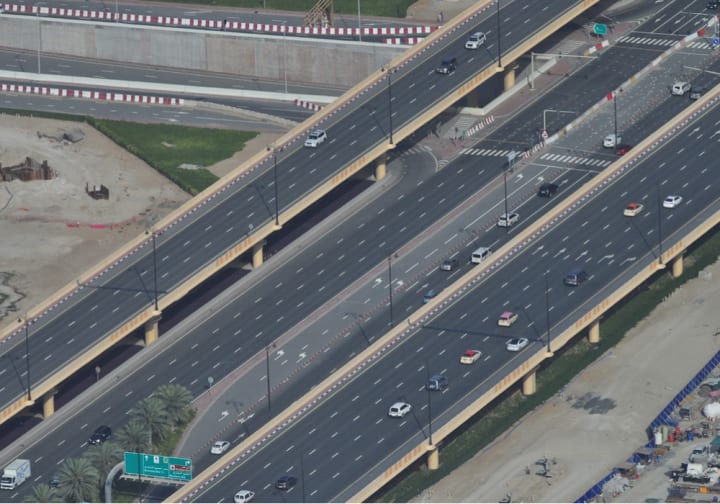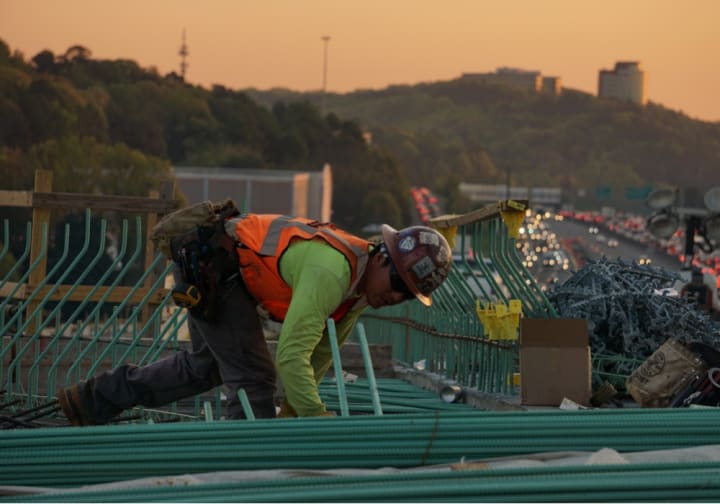Why You Should Invest in Infrastructure Funds
Infrastructure mutual funds have been performing remarkably well lately. Does this imply you should invest in infrastructure funds and grow your investment portfolio?

Infrastructure funds have become extremely popular in the last couple of years, and they continue to attract capital and attention as an investment asset class. This may leave you questioning, "Should I invest in infrastructure funds?" To perhaps better answer that question, it is imperative we start with a more basic question: What is infrastructure?
Just like its close relative in the investment asset class, real estate, infrastructure is a “real asset” because it exists in our physical world. Just like real estate, they are physical assets permanently attached to the ground.
Infrastructure’s similarities with real estate mostly end there. Even though real estate’s ownership can also be forever, its worth at each given time is greatly dependent on superior economic forces. It is, largely, correlated to the nation’s economy.
This implies that one’s interest to invest in real estate is dependent on the general economic outlook: “Will things get better or worse in the future? Especially for this piece of land.”
On the other hand, infrastructure funds’ worth is less dependent on larger economic forces. This means that its worth may neither decrease nor increase based on superior economic trends. So, what’s infrastructure when perceived as an investment option?
The “investment” definition somewhat differs from the commonly held notions or dictionary definitions that would explain it as “basic physical structures essential to the operation of a civilization.”
This is a good starting point as an investment definition for beginners, but the key to comprehending a seasoned investor’s perception of infrastructure is the word “essential,” not the word “physical.”
A toll road is physical, but whether it is essential is the more nuanced and important question; “Do we have other surface transportation alternatives?” Better yet, toll road’s correlation with the larger economic trend is another reason why you should look beyond the dictionary definition of infrastructure. Who pays the tolls, who rides the road, and why do they do it?
The best way to understand infrastructure as an investment option is to stop perceiving it the same way a member of the general public would. While most infrastructure assets may be great ideas, some of them are not good investments.
For instance, mass transit is certainly a good idea for the general member of public because it transports people more effectively; but more often than not, it is a bad investment option since most mass transit organizations cannot cover operational and capital costs with tickets, tolls, or similar user charges.
Even though they are a great public policy, they are not good investment opportunities. With that in mind, let’s look at why infrastructure funds are a great option.
Why should you invest in infrastructure funds?

Image by Unsplash
Most seasoned investors agree that infrastructure funds are very lucrative. This not only applies to America and other developed nations, but also to developing nations as well.
For instance, the government of China expects the number of car owners in the country to increase as the nation moves toward wages rise and industrialization. This is good news for car manufacturers, but for most private institutions and all investors, the real investment opportunity, in this case, is presented by infrastructures that accompany this astounding wave of mobilization. Waste disposal, power stations, streets, and railways are indispensable in order to maintain the economic momentum of such developing nations.
In Europe and America, old infrastructures are constantly becoming rundown, requiring replacement and repair. This depreciation results in billions of dollars being spent on maintaining and upgrading this infrastructure.
In fact, both developing and developed nations will need to revamp or extend their infrastructures; and as you might have guessed, this is going to cost lots of cash. Nowhere in the world (not even America) can the public sector fund this single-handedly.
It requires investors, and lots of them. What makes this so appealing to investors is the fact that remunerations are calculable and relatively independent of short term market trends.
A technology consulting firm, Booz Allen Hamilton, predicted that the cost of extending, building, or refurbishing water facilities, power, and roadways (including other infrastructural provisions) will cost around $40 billion on an international basis from 2007 to 2032.
Let us take a closer look at the nature of infrastructure assets.

Image by Unsplash
At this point, we all agree that infrastructure assets have long lives and high development costs. This means that they’re generally financed and managed on a long term basis.
Earlier, infrastructure companies were managed and financed by governments. However, as of late, this role has declined and there is more private funding and privatization. This transformation has opened up the investment field for private investors.
In the past, infrastructure alluded to sewer systems and other fragments of a nation’s basic framework. Nowadays, however, all manner of transport routes & carriers, power stations, and pipelines form part of the global and national infrastructure.
Therefore, investment funds specializing in this area hold stocks covering a vast array of sectors and industries. As a result, these opportunities are enticing to investors and are, typically, low-risk investments for your money. Institutional investors are also investing their hard-earned cash in these areas.
What will it take to include infrastructure funds in your portfolio?

Image by Unsplash
Given the universal promising outlook of infrastructure funds in the next couple of years, it seems only sensible to contemplate on investing a certain portion of your investment funds in this booming sector.
Depending on your risk preference, the structure of your trading portfolio, and personal attitude toward infrastructure assets, investing 5 to 10 percent of your total funds in infrastructure makes sense.
As specified above, the risk scenario for infrastructure funds is somewhat diverse, but the good news is, there is something for all tastes; and generally, the sector remains an investment opportunity with very high potential.
That said, lots of research is required before investing in infrastructure funds. If you have a good understanding of this industry and your risk tolerance, go at it. If you do not fully comprehend those two facets, I suggest you do some research, ask yourself what the best investment for you is, and seriously consider risking your hard-earned cash.
This type of investment will not only help build your personal wealth, it could very well build a better world for tomorrow.

Image by Unsplash
Infrastructure provides a solid area for investment opportunities, whether through mutual fund stocks, individual stocks, or ETFs (assuming you know what an ETF is), diversifying any financial portfolio you may have in ways that could only prove to your benefit. As nations’ water facilities, power facilities, bridges, and roads depreciate, the need to upgrade and repair them emerges. A similar need for infrastructure occurs in developing nations as they build facilities and roads because they need to increase industrial development. Since this work is imperative in maintaining economic momentum in every nation, it is always a wise move to invest in infrastructure funds.
About the Creator
George Nekilan
Has a vegetable garden in his backyard, 5th son out of 8 and is a sucker for chick flicks.






Comments
There are no comments for this story
Be the first to respond and start the conversation.